
Updated on 17 Sep 2024
VIDEO: Thermal comparison - DJI Mavic 2 Enterprise Dual v Zenmuse XT2
Video and in-depth review: How the Mavic 2 Enterprise Dual, Zenmuse XT2 and Viewpro cameras compare as thermal options for commercial drone users. ... Read More

From headline-grabbing police missions involving infrared technology to the recent release of the DJI Mavic 2 Enterprise Dual - drones and thermal imaging is a hot topic right now.
When DJI unveiled the aforementioned UAV at the end of last year, the Chinese-based technology giant essentially offered an all-in-one solution for thermographers.
But where does it rank among other options out there? Take DJI's very own Zenmuse XT2 for example - a thermal camera which is compatible with DJI's Matrice Series and was launched amid much fanfare in the spring of 2018.


There's also another kid on the block - with Shenzhen Viewpro Technology Co's range of infrared gimbal cameras. These models will be reviewed in their own section towards the bottom of this blog.
In this post, Heliguy Insider takes a look at how these products differ and in what situations they might be utilised, from life-saving missions to utility inspections.
VIDEO: Mavic 2 Enterprise Dual v Zenmuse XT2 - How do the thermal cameras compare?
So, with this being a blog about thermal cameras and drones, then the best place to start is to look at the thermal capabilities of the Mavic 2 Enterprise Dual and the Zenmuse XT2.
To examine this, we headed out into the field to do a like-for-like comparison, testing each option in three different scenarios from heights of 30ft, 50ft, 80ft and 100ft. The video below shows the results.
So what did we learn?
Well in this particular race, there was perhaps only one winner, with the XT2's powerful FLIR Tau 2 sensor giving greater clarity at a further distance. For the test, the XT2 had zero zoom and we used a 19mm lens. The Mavic 2 Enterprise Dual does not have a zoom.
But this performance was to be expected, with the clue very much in the specs. The XT's thermal camera achieves a resolution of up to 640 x 512, compared to the FLIR Lepton's 160 x 120 on the Mavic 2 Enterprise Dual.
But that does not mean that the Mavic 2 Enterprise Dual should be discounted. Take this comparison for example, which shows a person in a field.

There's no doubt that the clarity on the XT2 is superior, but it is more than fair to say that the Dual is able to pick out the figure, or at the very least, a heat source - crucial for rapid-deployment missions, searching for a missing person or even for swooping around at close range to try to detect somebody in a burning building.
And even when we took the Dual to 80ft and 100ft, that heat source is still identifiable.

But, there's no doubt about it - if you are looking for a higher-class performer, then the XT2 is the one for you. Not only does it offer great performance, but it is also a very versatile piece of kit.
For instance, there are a total of 12 models available with adjustments in lens size, frame rates and resolution - ranging from the 336 x 256, 19mm, 9Hz option to the mighty 640 x 512, 25mm, 30Hz beast. On top of this, the XT2's thermal camera has zoom, with up to 4x at 336 x 256 resolution and up to 8x on 640 x 512.
It's impressive stuff and ideal for missions where thermal clarity is absolutely key or for those wanting to cover large areas or complete an objective from further away.

The Dual does not have such luxuries, in the sense that it comes with just one resolution option and does not have a zoom.
Another downside to the Dual is that its photos are JPEGs only, whereas the XT2 supports JPEG format, as well as TIFF and R-JPEG. As the Dual lacks R-JPEG capability, images cannot be imported into FLIR Tools for radiometric processing on pictures.
But in other aspects, both models are the same, such as having a range of colour palettes, benefitting from isotherms (focus on a specific temperature band to identify what is important) and utilise FLIR MSX (overlay the thermal and visual data allowing you to access even more data).
For an in-depth feature on using thermal cameras - including information on different colour palettes, emissivity and field of view/resolution - click onto our blog entitled Guide to Thermal Imaging.
Both the XT2 and Dual also have visual-camera capability and there's not a huge difference here in certain aspects. The visual cameras on each are capable of capturing 4K, 12MP images. However, a major plus for the XT2 is that it does have up to 8x zoom capabilities.
Mavic 2 Enterprise Dual v Zenmuse XT2 - All-in-one or compatibility
One of the most obvious comparisons between the Mavic 2 Enterprise Dual and the Zenmuse XT2 is the difference between the one-stop-shop nature of the Dual and the compatibilty factor of the XT2.
The Mavic 2 Enterprise Dual is a complete solution - featuring a side-by-side 4K sensor built onto the drone to capture visible light and thermal data.
The aircraft itself is essentially a Mavic 2, so comes with all of the benefits associated with this type of UAV, ie light, foldable, compact and extremely portable. This is ideal for the likes of search and rescue teams who require an easily transportable solution.
On the other side of the coin, the Zenmuse XT2 is a larger camera which needs to be attached to a drone for aerial work. It can be integrated with a range of heavy-duty DJI UAVs, namely the M200, M210, M210 RTK and the M600 Pro.
One of the perks of using an M210 or M210 RTK, for example, is that you can bolt-on multiple payloads, such as the Zenmuse XT2, alongside other options such as the Zenmuse Z3, Zenmuse X5S and Zenmuse X4S, giving the operator huge scope and flexibility in a range of missions. A drone carrying an XT2 and a Z30 - with its 30x zoom - for example, will offer comprehensive coverage from the air and greater efficiency.
But remember, this is a less portable option. Yes, the Matrice and the XT2 offer many pros, but you can't slip a Matrice drone in your pocket or in a corner of your backpack.

Mavic 2 Enterprise Dual v Zenmuse XT2 - Other factors to consider
As the Mavic 2 Enterprise Dual is an all-in-one solution, you have to look at what you are getting as a whole package, not just its camera capabilities.
And there are some pretty cool features which could be vital during a life-saving mission, including the three accessories which can be attached to the drone - namely the spotlight, speaker and beacon.
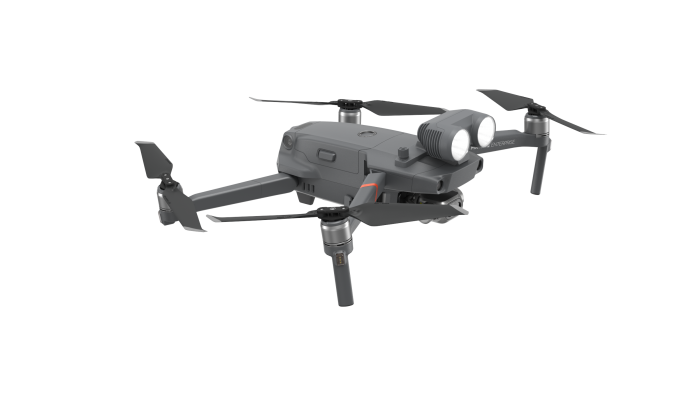
Spotlight
A dual spotlight with a brightness of 2,400 lumens aids operators in carrying out missions in dark or low-light areas. Spotlight is ideal for search and rescue as well as inspection applications.

Speaker
A loudspeaker with a maximum projection of 100 decibels (1-meter distance) lets pilots play up to 10 custom voice recordings on demand, providing a communications channel to nearby individuals that can be critical during life-saving emergency operations.

Beacon
The Beacon features a bright flashing strobe visible three miles away. This helps pilots carry out missions in low-light conditions or at night much more safely, and provides additional airspace awareness for operators of nearby drones and traditional aircraft.
Imagine how beneficial it would be to use the thermal camera to locate a missing person, and then utilise the loudspeaker to give that person vital information - such as comforting words that emergency crews are on their way.
Other features of the Mavic 2 Enterprise include 24GB of on-board data storage, password protection - especially useful to stop sensitive information from getting into the wrong hands - GPS timestamping and DJI's AirSense technology. It also provides just over 30 minutes of flight time.
In contrast, the battery life on the M200 series carrying a Zenmuse XT2 can be much shorter than this, depending on the type of battery you use.
M200 Series with TB50 batteries flying the Zenmuse XT2
M200 - 21 mins
M210 - 18 mins
M210 RTK - 16 mins
M200 Series with TB55 batteries flying the Zenmuse XT2
M200 - 30 mins
M210 - 28 mins
M210 RTK - 25 mins
The M600 Pro with TB47 batteries flying the Zenmuse XT2 has a life of 31 minutes.
Mavic 2 Enterprise Dual v Zenmuse XT2 - What's the difference in price?
One of the major differences about these products is the price.
The Mavic 2 Enterprise Dual Universal Edition costs £2,669, which represents major value for money, considering for this, you get the drone itself, a built-in visual and thermal camera and other items, such as the three accessories.

Yes, the thermal camera hasn't got the specs of the XT2, but the Dual essentially offers a decent enough thermal camera at a budget price. And it might be that the performance of the infrared sensor is perfectly adequate for your mission types.
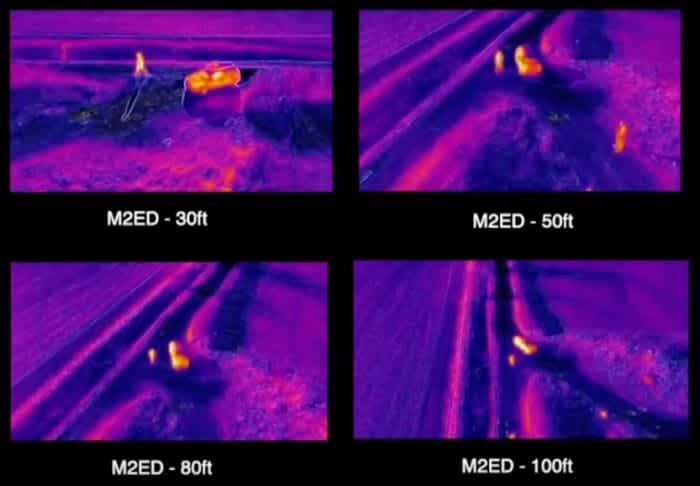
It is significantly cheaper than going down the Zenmuse XT2 option. First off, the XT2 ranges in price depending on the size of the lense, resolution and the Hz for each option.
As well as purchasing the camera, there is also the cost of the drone to consider. By integrating a Matrice with the XT2, the price tag could amount to around seven times the amount of a Mavic 2 Enterprise Dual. Clearly going down this route from scratch is a fairly costly affair, but the cost is balanced by the fact you are getting a very capable drone with an extremely good thermal option.
Viewpro cameras
When it comes to thermal-camera considerations, it is important to know that there are some other options out there, with Shenzhen Viewpro Technology Co throwing its hat into the ring. The models in the mix include:
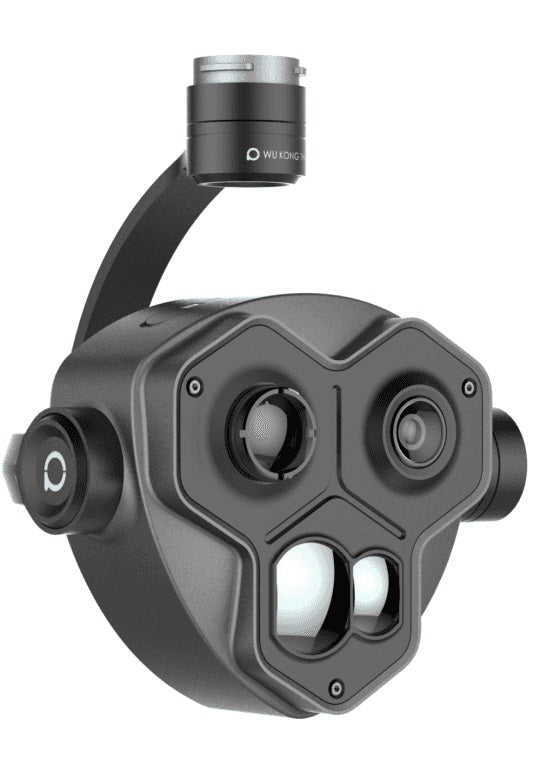


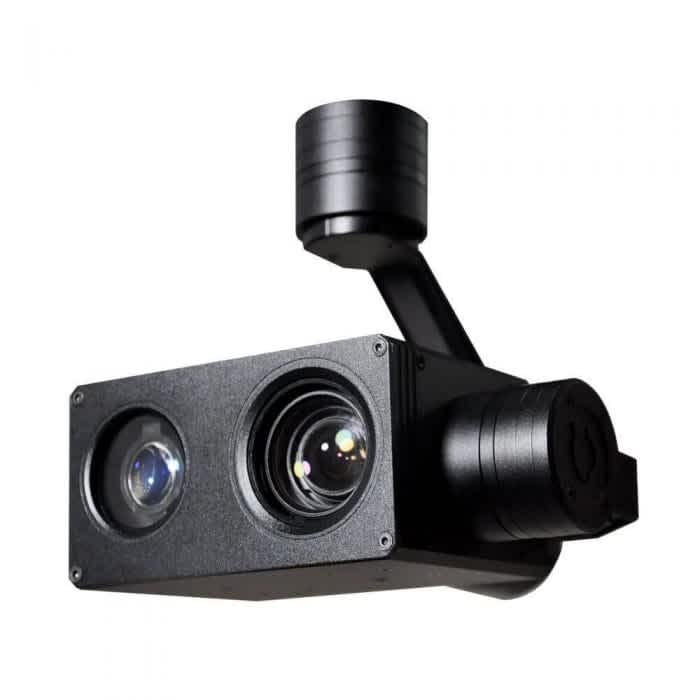
With these cameras come numerous perks, including the fact that they are compatible with the DJI Matrice Series of drones, as well as fixed-wing models.
There's also the very important fact that these cameras are capable of seriously high performance. For instance, all four have a thermal-image resolution of 640 x 480 with a 19mm lense - impressive stuff! They are also all able to achieve 10x optical zoom. This quartet of cameras have visible light and thermal imager dual sensors and are capable of object tracking, making them an incredibly powerful and versatile tool.

As an added bonus, the Viewpro Z10TL has laser night-vision capabilities, allowing you to observe an event, even on a pitch-black night.

In terms of key considerations, the Viewpro cameras are similar to the XT2 in the sense that they need to be attached to your drone - compared to that all-in-one package of the Dual. As for price, the cameras range from £5,399 to £21,600.
Key features
EO + IR (electro-optical/infrared) dual-sensor gimbal camera10x zoomThermal imagerTarget tracking/target location resolution1500 meters rangingDJI Skyport interfaceDJI Pilot APP controlSeamlessly dock with DJI M200, M210 and M210 RTK
Key specifications
Image sensor: 1/3″ CMOSLens: 10x optical zoom, F=3.2-33.6mmTotal pixel: 4.08MPThermal imager: 640 x 480, 19mm lensTrack object size range: 16_16 pixel-160_160 pixelTracking speed: ±32 pixel/frameWorking voltage: 12V 3s-4sOutput: microHDMI 1080p/RJ45/SDILocal storage: SD card up to 128GNet weight: 900gDimensions: 175.5 x 156.7 x 145mm
Key features
EO + IR (electro-optical/infrared) dual-sensor gimbal camera10x zoomGPS position OSD overlay1500 meters rangingDJI Skyport interfaceDJI Pilot app controlSeamlessly dock with DJI M200, M210 and M210 RTK
Key specifications
Image sensor: 1/3″ CMOSLens: 10x optical zoom, F=3.2-33.6mmTotal pixel: 4.08MPThermal imager: 640 x 480, 19mm lensTracking object size range: 16_16 pixel-160_160 pixelTracking speed: ±32 pixel/frameWorking voltage: 12V (3s-4s)Output: microHDMI 1080p/RJ45/SDILocal storage: SD card up to 128GNet weight: 900gDimensions: 175.5 x 156.7 x 145mm
Key features
EO + IR (electro-optical/infrared) dual-sensor object tracking mini gimbal camera10x zoomVisible light and thermal image-in-picture displayCompatible with the DJI Pilot appSeamlessly dock with DJI M200, M210 and M210RTK
Key specifications
Image sensor: 1/3″ CMOSLens: 10x optical zoom, F=3.2-33.6mmTotal pixel: 4.08MPThermal imager: 640 x 480, 19mm lensTrack object size range: 16_16 pixel-160_160 pixelTracking speed: ±32 pixel/frameWorking voltage: 12V (3s-4s)Output: microHDMI 1080p/RJ45/SDILocal storage: SD card up to 128GNet weight: 490gDimensions: 118 x 109 x 120mm
Key features
10x zoomInfrared laser effective distance of 300mHDMI HD – 1080p60, 1080p30DJI Skyport interfaceDJI Pilot app controlSeamlessly dock with DJI M200, M210 and M210 RTK
Key specifications
Image sensor: 1/2.8″ CMOSLens: 10x optical zoom, F=4.7-47mmTotal pixel: 2.43MPLaser ranger: 300 metresTrack object size range: 16_16 pixel-160_160 pixelTracking speed: ±32 pixel/frameWorking voltage: 12V (3s-4s)Output: microHDMI 1080pLocal storage: SD card up to 128GNet weight: 650gDimensions: 131.4 x _119.8 x_150.5mm
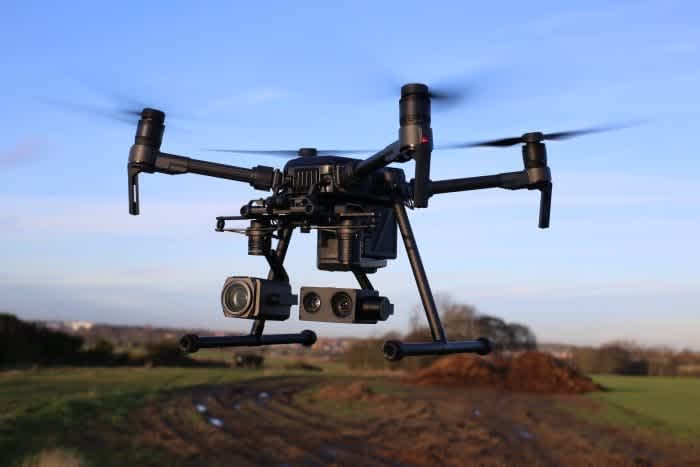
The Viewpro Z10TL (camera on the right) on a Matrice Series drone,
Why use drones and thermal cameras?
The benefits of using a drone with a thermal camera have already been alluded to during this blog, but in a nutshell, this technology can help with many missions, including:





Integrating a drone with a thermal camera can help with efficiency, safety and cost.
The benefits include the fact that the UAV can cover large areas more quickly, and add a bird’s-eye view of an incident – providing a different and often crucial perspective. This in-turn allows operators to make real-time strategic decisions, often away from the danger zone, while also keeping tabs on crew members.
To read a more in-depth post about how drones and thermal imaging can help, click here.
Conclusion
When it comes to combining a thermal camera with a drone, it is clear to see that there are a number of options out there. But which is the best for you?
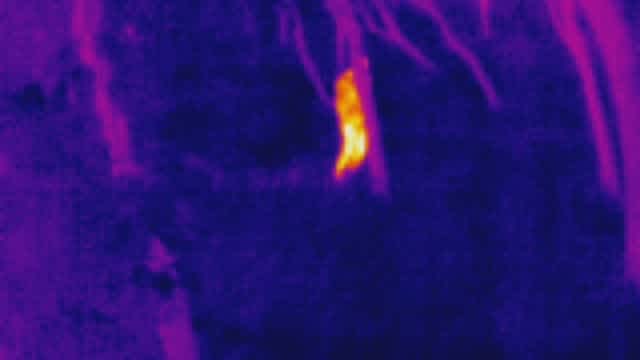
The XT2 does have superior thermal capabilities - and thanks to its range of lenses, resolutions and compatibility, it is an incredibly flexible option and ideal for pilots wanting/needing to capture seriously accurate thermal data, and from greater distances. In truth, it is a top-notch piece of kit, which offers something a bit more bespoke than the Mavic 2 Enterprise Dual.

The same can be said of the Viewpro cameras, which are compatible with a number of DJI drones and have some very impressive specifications.
However, the Dual is incredibly lightweight and portable - ideal for mountain rescue teams, for instance. Slipping the ultra-light Dual into your backpack is a far better option than having to haul a Matrice Series drone with an XT2 or Viewpro, across difficult terrain. After all, the Dual weighs 899g (without accessories), compared to the Matrice Series, which tip the scales at anything from 3.80kg to 5kg, depending on the make of drone and the type of battery you use - and that's without a payload!
And the fact that the Dual is an all-in-one solution means that it can be embroiled in the thick of the action very quickly.

The Z10TL on a Matrice Series drone.
Then there's the cost factor. Does the Dual, priced at just under £2,670, represent more value for money - considering it has a range of things going for it, such as dual-sensor capability and those three key accessories, which could be vital for the emergency services?
You could even use both tools together - by sending up the Mavic 2 Enterprise Dual for initial quick-fire results, and then deploying a Matrice with a XT2/Viewpro with their greater specs if needs be.
In essence, all of the options offer food for thought and perhaps it is a case of horses for courses. But what is true is that they provide the operator with incredibly useful thermal-imaging capabilities.

written by
James Willoughby
James joined heliguy™ in 2018 following a 13-year stint in print and online journalism, having worked on regional and weekly newspaper titles. He is responsible for spearheading heliguy™'s content strategy and social media delivery. James collaborates with DJI Enterprise's European marketing team to coordinate and produce case studies and helps organise events and webinars.